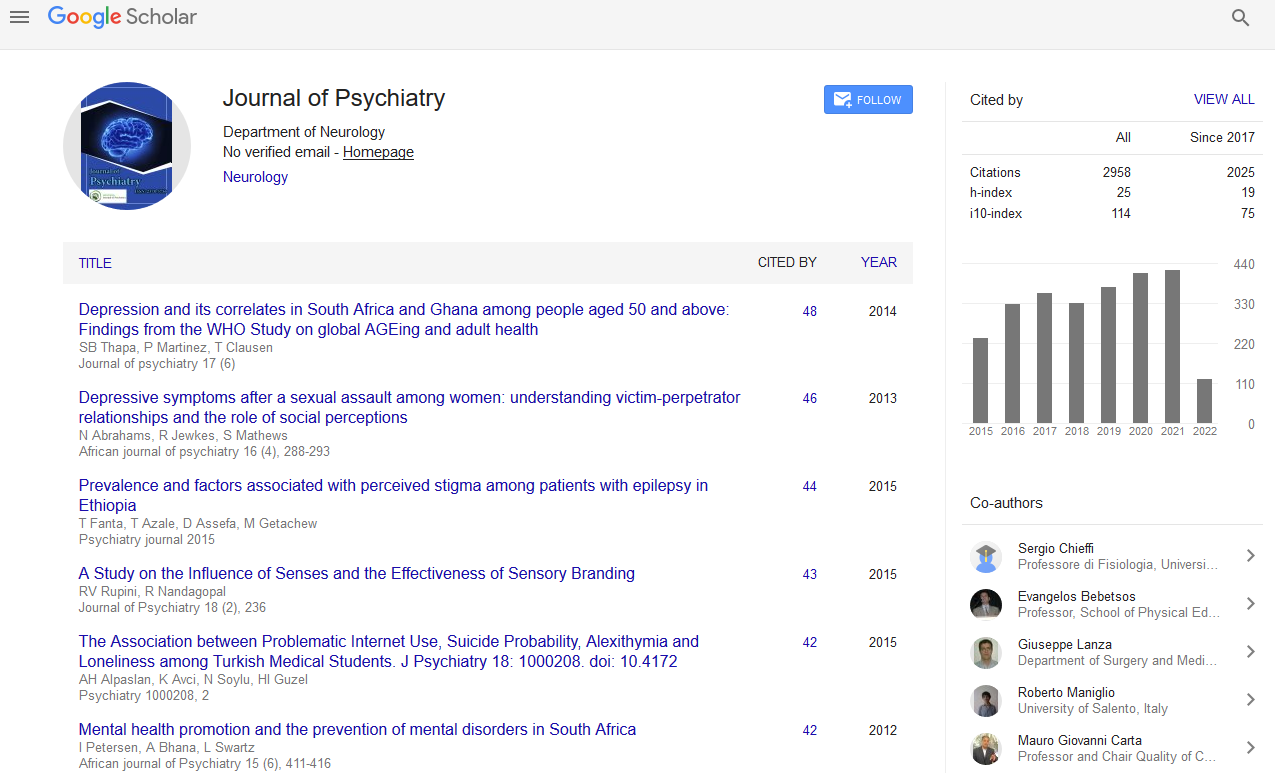PMC/PubMed Indexed Articles
Indexed In
- RefSeek
- Hamdard University
- EBSCO A-Z
- OCLC- WorldCat
- SWB online catalog
- Publons
- International committee of medical journals editors (ICMJE)
- Geneva Foundation for Medical Education and Research
Useful Links
Share This Page
Open Access Journals
- Agri and Aquaculture
- Biochemistry
- Bioinformatics & Systems Biology
- Business & Management
- Chemistry
- Clinical Sciences
- Engineering
- Food & Nutrition
- General Science
- Genetics & Molecular Biology
- Immunology & Microbiology
- Medical Sciences
- Neuroscience & Psychology
- Nursing & Health Care
- Pharmaceutical Sciences
The effectiveness of individual diagnostic profiles in both the construction and application of suited intervention models in infants at risk of specific developmental dyslexia
20th Euro Congress on Psychiatrists and Psychologists
August 07-08, 2017 | Rome, Italy
Victoria Zakopoulou, Vasiliki Siafaka, Nikos Tziakis, Maria Boukouvala, Maria Apostolidou, Dimitra Dalakoura, Stefania Ferentinou, Dora Konstantopoulou, Christiana Rina, Marianthi Tsakiridou and Venetsanos Mavreas
Technological Educational Institute of Epirus, Greece
University Hospital of Ioannina, Greece
Scientific Tracks Abstracts: J Psychiatry
Abstract:
Statement of the Problem: The Specific Developmental Dyslexia (SDD) is related to 3-12% of the student population and manifested by a diversity of symptoms in the process of reading and writing acquisition. It is characterized by various interactions of dysfunctions of biological, neurophysiological, cognitive and psychomotor factors. Early detection of SDD at the preschool age is becoming more urgent as it contributes in reducing or preventing multiple negative impacts on later school age. Aiming in this study, to create and implement appropriate individualized early intervention models, early diagnosis procedures were designed, applied, and analyzed through a correlation model of the following factors: cognitive (memory, attention, perception), psychomotor (laterality, spatiotemporal orientation), linguistic (emerging literacy), socio-emotional (internalized and executive behavior). Methodology & Theoretical Orientation: The survey was applied to a sample of 20 infants from 4.6 to 6.0 years, and was completed in the following stages: a) implementation of four preschool diagnostic tools identifying infants at risk for early onset of SDD; b) investigation of main precursors factors; c) figuration of SDD customized profiles; c) design of intervention plans adjusted to the specific needs of each infant, implementing two structured intervention methods. Findings: Through multivariate analysis models, a total of 12 infants�?? diagnostic key SDD profiles were emerged, in a distinct multifaceted complexity. According to the classification and the combined manifest of difficulties, appropriately tailored individual intervention programs were designed and implemented on 10 infants for a period of 8 months. Conclusion & Significance: Though the current research was attempted to be stressed, the necessity as well as the possibility of developing, at the preschool age: i) safe, individualized diagnostic profiles of SDD and, ii) effective interventions models, well-suited individual specific needs.
Biography :
Victoria Zakopoulou is an Associate Professor at the Department of Speech and Language Therapy of the Technological Educational Institute of Epirus. She holds a PhD in Special Education, and MS and Bachelor’s Degrees in Psychology from the University of Ioannina. Her Postdoctoral Research has been carried out in the University Hospital of Ioannina (Pediatrics Clinic). Her research interests lie in the field of Learning Difficulties, with emphasis in Early Developmental Dyslexia. She is the Head of the Laboratory of New Approaches in Communication Disorders. She is a member of scientific committees and participates actively in the design and realization of scientific, research and corporate projects. She is the author of several research articles and has participated in several National and EU funded research projects.
Email: vzakop@ioa.teiep.gr


